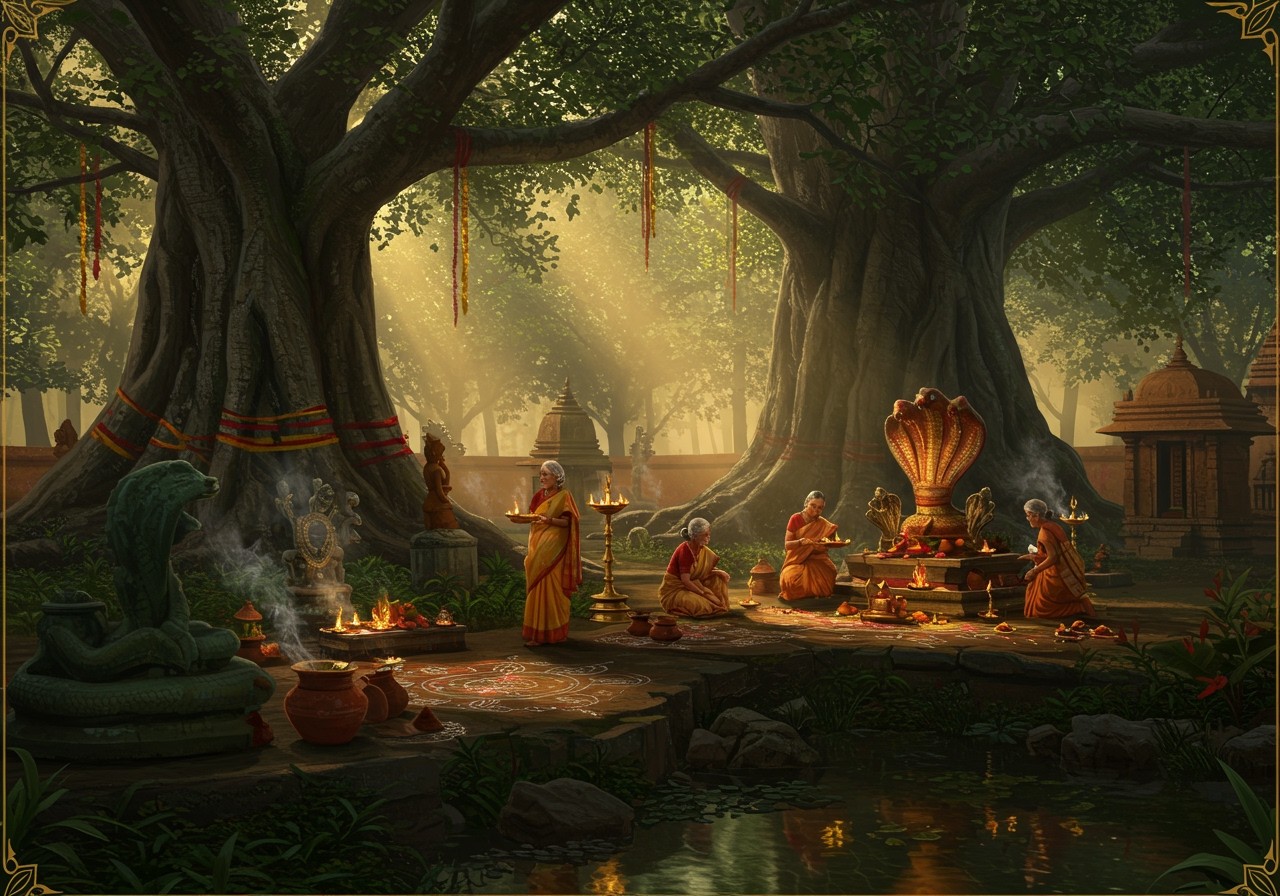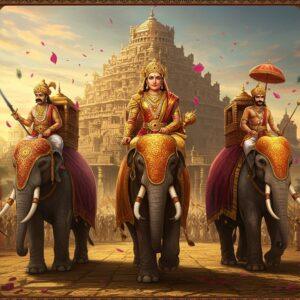
Dravidian traditions are a vibrant tapestry of cultural practices, deeply interwoven with nature and spirituality. Sacred groves and ancestral worship stand as two prominent pillars of this heritage, nurturing a profound connection between the people, their forebears, and the natural world. These time-honored practices continue to flourish, preserving a rich cultural legacy.
The Significance of Sacred Groves in Dravidian Society
Sacred groves are far more than mere collections of trees; they are hallowed spaces teeming with life and spiritual significance. Communities revere these groves as the dwelling places of deities and spirits, treating them with utmost respect. In Kerala, for instance, groves are dedicated to deities like Bhagawathi, Nagam, and Sasthappan. The belief that harming any life within these groves will incur divine wrath serves as a powerful deterrent, safeguarding these verdant sanctuaries and preserving their biodiversity across generations.
Communities, such as those in Kodagu, Karnataka, deeply rely on sacred groves for cultural festivals and rituals. The Ayyanar cult in Tamil Nadu exemplifies how these groves are intricately woven into the spiritual fabric of daily life. Protective customs ensure the continued preservation of these groves, conserving their rare and diverse flora and fauna.
You can find products related to Sacred grove rituals at poojn.in.
Ancestral Veneration in Dravidian Traditions
Ancestor worship forms a cornerstone of Dravidian family life, binding generations together. It involves rituals performed to seek blessings and guidance from ancestors. The ‘Pitru Paksha’ period holds particular significance, dedicated to commemorating and honoring departed family members. ‘Tarpanam,’ a ritual offering made during this time, sustains a spiritual link with ancestors.
Family deities, such as Lord Shiva in his manifestation as ‘Kula Deivam,’ play a central role. They embody the lineage and continuity of a family. The belief in the enduring spiritual presence of ancestors reinforces family values and strengthens traditions.
You can find products related to Ancestral worship at poojn.in.
The Reverence for Trees in Hinduism
Trees occupy a position of reverence in Hindu beliefs, often intertwined with the significance of sacred groves. The Peepal and Banyan trees, for example, are venerated for their spiritual symbolism and medicinal properties. They represent the cyclical nature of life, encompassing birth, death, and rebirth.
The concept of ‘Vriksha Devata,’ or tree deities inhabiting specific species, underscores the sacredness attributed to trees. Trees play an integral role in Hindu rituals and festivals, such as the worship of the Tulsi plant in homes, highlighting their spiritual importance.
You can find products related to Tree worship at poojn.in.
Village Deities and Their Protective Role
Village deities serve as guardians of communities, often associated with sacred groves. Deities like Mariamman, Aiyanar, and Karuppasamy are believed to safeguard agricultural activities and ensure the well-being of the community. Terracotta and stone icons often represent these deities, embodying local cultural identity.
Festivals dedicated to these deities strengthen community bonds, fostering unity and a shared sense of cultural heritage. These deities, unique to each village, reflect local traditions and beliefs.
You can find products related to Village deities worship at poojn.in.
Contemporary Relevance and Preservation Efforts
In today’s world, sacred groves face increasing threats from urbanization and resource exploitation. However, local communities and NGOs are working tirelessly to protect these ecological and cultural treasures. They promote biodiversity conservation and climate resilience through modern approaches.
Digital documentation and awareness campaigns help adapt these traditions to contemporary contexts, ensuring their continued relevance. By combining traditional knowledge with modern conservation practices, we can safeguard these precious cultural legacies for generations to come.
FAQs: Delving into Sacred Groves and Ancestral Worship
What are sacred groves? Sacred groves are designated areas of forest or natural land dedicated to local deities and ancestors, often serving as protected spaces for rituals and worship. They hold deep cultural and spiritual meaning within Dravidian traditions.
Why are trees significant in Hinduism? Trees symbolize life, growth, and renewal in Hinduism, often associated with deities and believed to be the abode of spirits. Specific trees like the Banyan and Peepal are considered especially sacred and are worshipped as part of Hindu rituals.
What role do village deities play? Village deities are local gods worshipped by communities for protection, safety, and prosperity. Each deity has unique rituals and festivals associated with them, celebrated by the community to maintain their blessings.
How is ancestor worship practiced in Dravidian traditions? Ancestor worship in Dravidian traditions involves offerings of food, prayers, and specific rituals to honor the spirits of deceased family members. This practice reinforces family ties and seeks blessings from past generations.
Can sacred groves be found in urban areas? While typically found in rural areas, some sacred groves have been preserved in urban environments, acting as reminders of cultural heritage and providing spaces for traditional practices amidst city life.
What kinds of rituals take place in sacred groves? Rituals performed in sacred groves include offerings, prayers, and festivals. Communities gather to honor deities and ancestors with traditional music, dance, and food, maintaining the spiritual essence of the groves.
How do sacred groves contribute to biodiversity? Sacred groves act as biodiversity hotspots, protecting native plant and animal life and fostering ecological balance. Their preservation helps sustain the environment and supports local wildlife populations.
Are sacred groves unique to Dravidian traditions? While holding particular importance in Dravidian culture, sacred groves are not exclusive to these traditions. Other communities across India and the world also maintain sacred groves, demonstrating a universal respect for nature and spirituality.
Conclusion: Honoring Timeless Traditions
Dravidian traditions offer profound wisdom, connecting us deeply with nature and spirituality. Sacred groves and ancestral worship are cherished practices that remind us of our roots and responsibilities. As we navigate the modern world, it is essential to preserve and honor these traditions, which enrich our lives, provide spiritual guidance, and strengthen community bonds. Protecting these practices ensures that future generations inherit the cultural legacy that shapes our identity.


